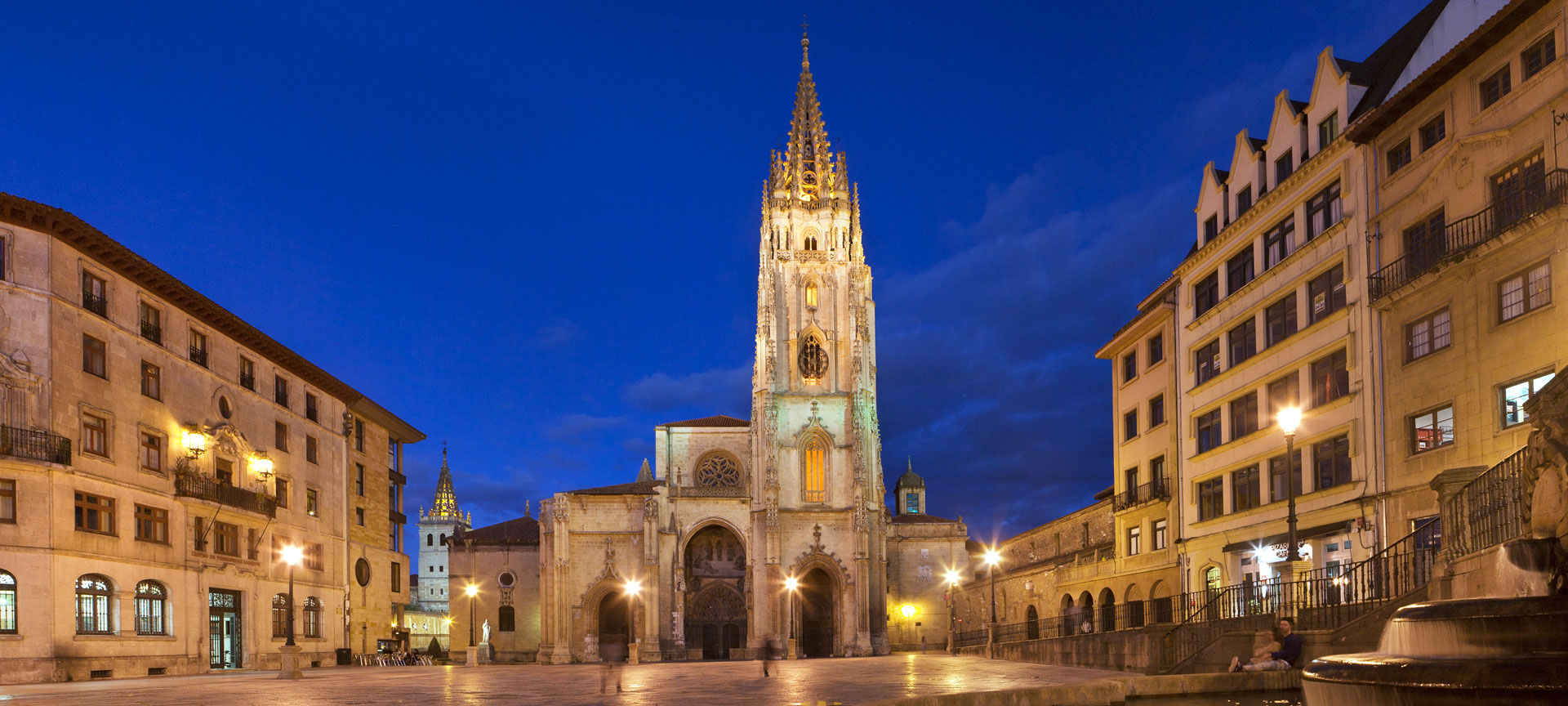
A symbol of Spanish Gothic architecture.
Oviedo cathedral is mainly in the Gothic style, although there are also some clearly Baroque and Renaissance elements.
The cathedral is set on the site of an old basilica built by Fruela I in honour of San Salvador. Construction began at the end of the 13th century and was concluded during the second half of the 16th century. The façade was designed by Juan de Badajoz and Pedro de Buyeres, and the tower (15th century) is of interest for its slender, integrated steeple. The church has three naves with side chapels, a transept and a Renaissance ambulatory. A range of plant motifs decorate the capitals of the long pillars that support the cathedral roof. The main altarpiece has a series of niches and tells the story of the life of Christ in pictures in the Gothic style, with Flemish influences. In the chapel of King Casto there is a Royal Pantheon in the Baroque style, which holds the bodies of the Asturian monarchs. The fresco on the vaulted roof of the sacristy is also in the Baroque style and is the work of Martínez de Bustamante. There is a Diocesan Museum in the cloister with important archaeological items on display. The Holy Chamber, declared a World Heritage site by the UNESCO, is integrated into the cathedral and houses the cathedral treasure, featuring particularly the Cross of Los Ángeles, the Cross of La Victoria, the Agate Box and the Holy Ark.
Oviedo Cathedral
Plaza Alfonso II El Casto, s/n.
33003 Oviedo, Asturias (Principality of Asturias)
Activa JS
Travel plans for inspiring you
Next tours










